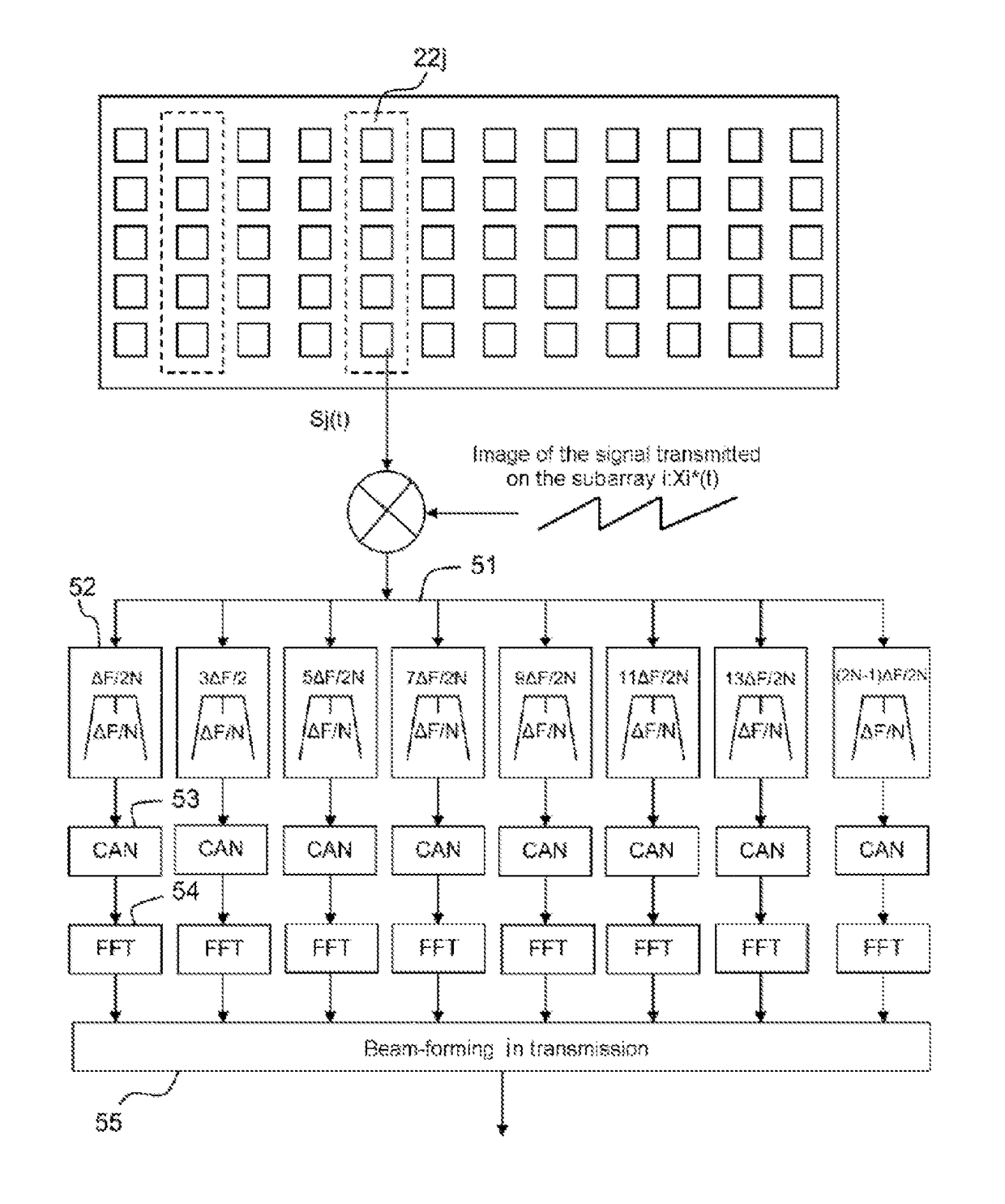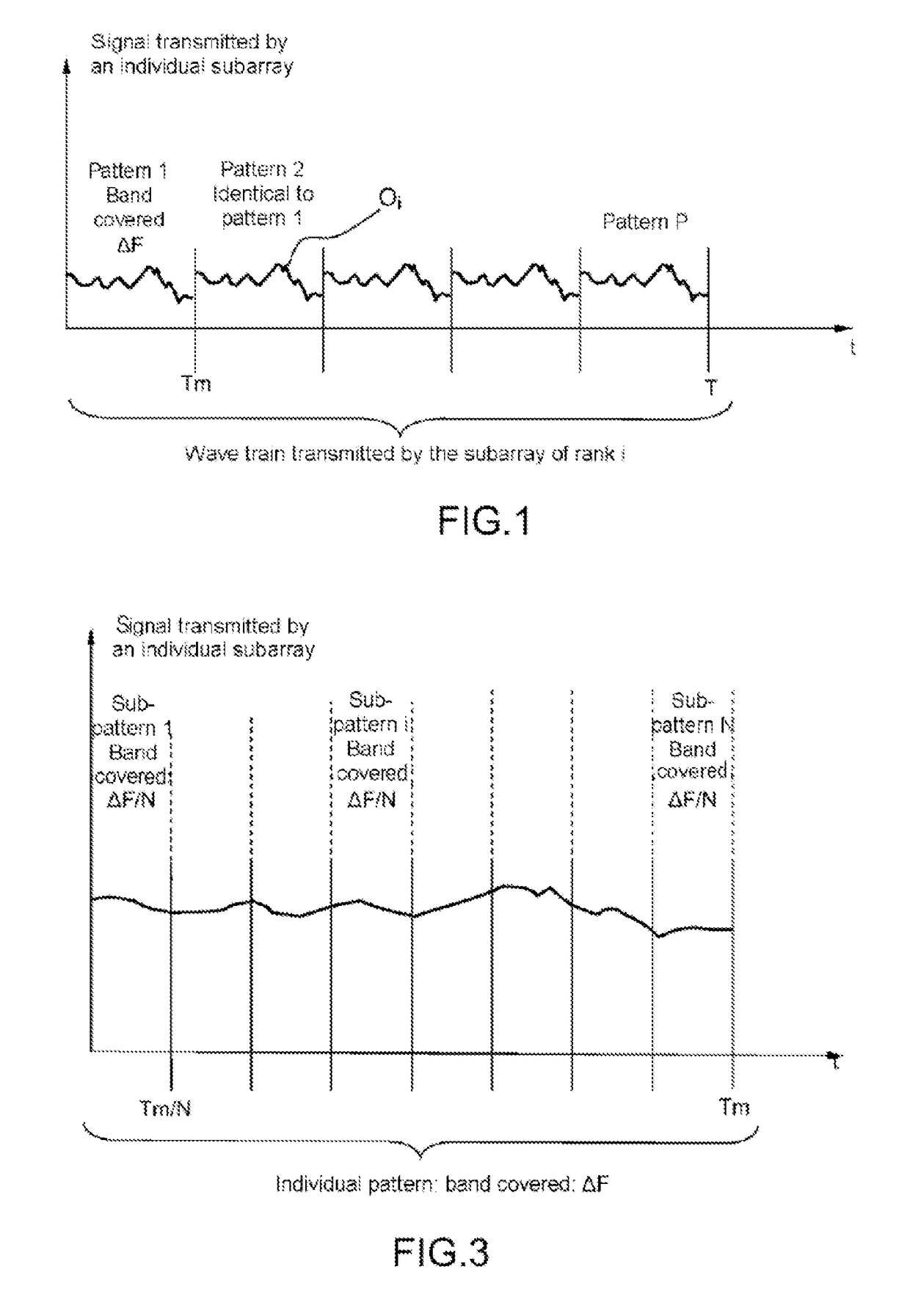Radar with low interception probability
a technology of interception probability and radar, applied in the field of radars with low interception probability, can solve the problems of limiting the use of the radar, reducing the range of the discreet radar, and exhibiting the continuous wave of the radar, so as to reduce the transmission leakage of the different transmit subarrays
- Summary
- Abstract
- Description
- Claims
- Application Information
AI Technical Summary
Benefits of technology
Problems solved by technology
Method used
Image
Examples
Embodiment Construction
[0045]Before describing an example of a radar according to the invention and its implementation, a few recaps concerning the principles used in transmission and in reception of the signal will be explained for a radar comprising, in the transmitter, an array antenna in transmission and an array antenna in reception in accordance with the abovementioned MIMO architectures. Each of these antennas consists, for example, of subarrays that are identical and non-directional in at least one plane in transmission.
[0046]FIG. 1 schematically represents, in a system of axes in which the x axis represents the time and the y axis the amplitude of the signal transmitted by an individual subarray, a wave train transmitted by the subarray of rank i.
[0047]In transmission, all the individual subarrays of the transmit antenna simultaneously transmit one and the same wave train on a carrier frequency f, with, for each individual subarray, a different delay τ relative to a common time origin. This wave ...
PUM
 Login to View More
Login to View More Abstract
Description
Claims
Application Information
 Login to View More
Login to View More - R&D
- Intellectual Property
- Life Sciences
- Materials
- Tech Scout
- Unparalleled Data Quality
- Higher Quality Content
- 60% Fewer Hallucinations
Browse by: Latest US Patents, China's latest patents, Technical Efficacy Thesaurus, Application Domain, Technology Topic, Popular Technical Reports.
© 2025 PatSnap. All rights reserved.Legal|Privacy policy|Modern Slavery Act Transparency Statement|Sitemap|About US| Contact US: help@patsnap.com



